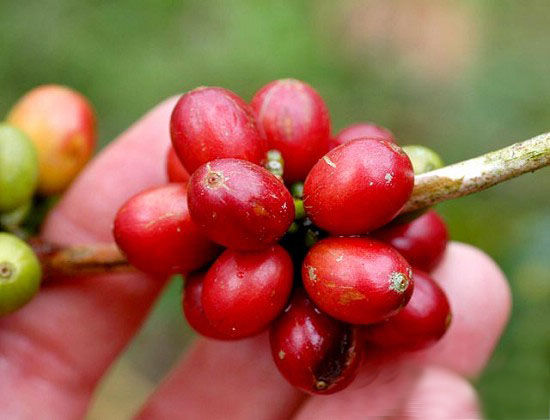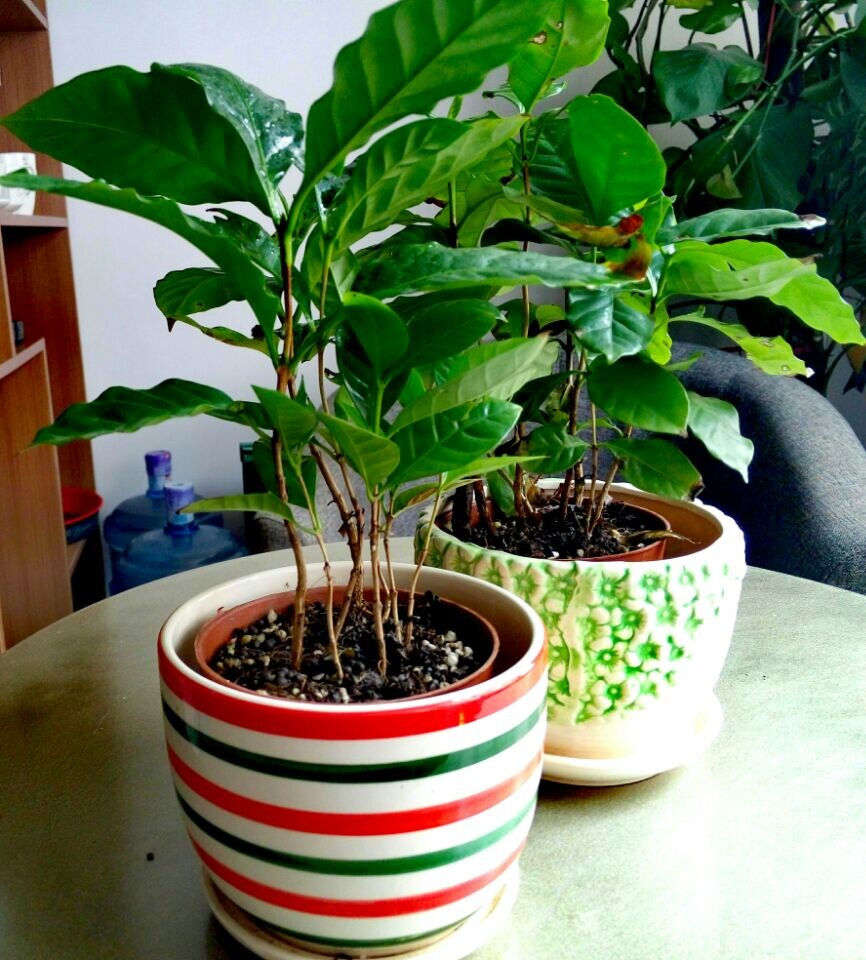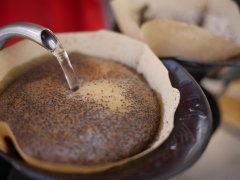There is a kind of tree that we call the coffee tree, the environment in which the coffee tree is generated.

The generating environment of coffee trees
In botany, coffee trees belong to the evergreen trees of the subgenus Rubiaceae, and coffee beans, commonly known as coffee beans, are actually the seeds of the fruit of coffee trees, just because they are shaped like beans. Climate is the decisive factor for coffee cultivation. Coffee trees are only suitable for growing in the tropics or subtropics, so the zone between latitude 25 degrees south and north is generally called coffee belt or coffee area. However, not all the land located in this area can produce good coffee trees.
one
The optimal planting conditions for coffee trees are: a warm climate with a temperature between 15-25 ℃, and annual rainfall of 1500-2000 mm. At the same time, the rainfall time should be in line with the flowering cycle of coffee trees. Of course, in addition to the seasonal rainfall, there should also be fertile soil and good drainage. In addition, although sunlight is an indispensable element for the growth and fruit of coffee, too strong sunlight will inhibit the growth of coffee trees, so various producing areas will usually cooperate with the planting of some shade trees. The ideal altitude for coffee trees to grow is 500-2000 meters. It can be seen that the conditions for the cultivation of high-quality coffee are very strict: sunlight, rainfall, soil, air temperature, as well as the way coffee beans are harvested and the production process will affect the quality of coffee itself.
two
The first flowering period of the white flower and red fruit coffee tree is about three years old. the white five-petal tube-shaped flowers are filled with a faint fragrance of jasmine, and the inflorescences are arranged in dense clusters. The petals will wither in two or three days and bear fruit after a few months. The fruit is a drupe with a diameter of about 1.5cm. It turns green at first, then turns yellow gradually, and turns red when ripe. It is very similar to cherries, so it is called cherry coffee (Coffee Cherry). It can be harvested at this time. Coffee fruit contains two seeds, namely coffee beans. The two beans are connected face to face with each other on one side of the plane. Each coffee bean has a thin outer film, which is called silver skin, and its outer layer is covered with a yellow outer skin, called endocarp. The whole coffee bean is wrapped in a sticky pulp to form a soft and sweet coffee pulp with the outermost shell.
Types of coffee trees
At present, the best quality coffee beans in the world mainly come from Arabica, Robusta and Liberia, which are mainly proud of the coffee trees in the three places.
1 Arabica coffee tree
The country of origin is Ethiopia, and its coffee bean production accounts for 70% of the world's output; the world-famous Blue Mountain Garffin, mocha coffee and so on are almost all Arabica species. Arabica coffee trees are suitable for growing in high mountains with large temperature difference between day and night, as well as low humidity and well-drained soil; the ideal altitude is 2000 meters, the higher the altitude, the better the quality. Arabica coffee trees require fertile soil, sufficient moisture, proper sunshine and shade, poor resistance to diseases and insect pests, and low annual output per unit area.
2 Robusta coffee tree
Congo, which originated in Africa, accounts for about 20% of the world's output. 30%. The Robusta coffee tree is suitable for planting in the lowlands below 500 meters above sea level, has a strong adaptability to the outside world, can resist adverse weather and insect pests, and does not need much manual care during soil preparation, weeding and pruning, and can be allowed to grow in the wild. It is a kind of coffee tree that is easy to cultivate. But its flavor is more bitter than Arabica, and its quality is much lower, so it is mostly used to make instant coffee. In general, the coffee sold in fast food restaurants mainly uses Robusta coffee beans as the material. Because it is made in Africa, most Africans drink robusta coffee. Robusta coffee trees have strong resistance to diseases and insect pests and are not vulnerable to agricultural diseases. the annual output of coffee trees per unit area is higher and can be harvested in large quantities by machine. generally speaking, the production cost is lower than that of Arabica coffee.
3 Liberian coffee trees
Liberia, which is native to Africa, has a shorter cultivation history than the other two coffee trees, so it is only planted in a few places such as Liberia, Surinam and Gaiana, so it accounts for less than 5% of the world's output. The coffee tree of Liberia is suitable for planting in the lowlands, and the coffee beans produced have a strong aroma and bitter taste.
"our company's mini coffee tree."

Important Notice :
前街咖啡 FrontStreet Coffee has moved to new addredd:
FrontStreet Coffee Address: 315,Donghua East Road,GuangZhou
Tel:020 38364473
- Prev

Exploring the Secret of Coffee-making Technology in Coffee shops
1. Fresh coffee beans 2, correct grinding 3, good water quality 4, proper water temperature 5, five tips for gently brewing coffee: 1 fresh coffee beans 2 correct grinding 3 good water quality 4 good water temperature 5 gentle brewing with little experience, it takes a lot of patience to achieve 4 or 5 o'clock, and the right water temperature requires many times to perceive the subtle reasons.
- Next

More and more attention has been paid to hand-brewing coffee.
Post-espresso era: Michael, the 2010 world champion barista. What Michael Phillips performs in the major exhibitions is no longer the old Espresso and pull flowers, but how to flush them by hand. The third most popular cafe in the United States is # Stumptown Roasters#, # Blue Bottle# and # Intelligentsia Coffee#,.
Related
- Beginners will see the "Coffee pull flower" guide!
- What is the difference between ice blog purified milk and ordinary milk coffee?
- Why is the Philippines the largest producer of crops in Liberia?
- For coffee extraction, should the fine powder be retained?
- How does extracted espresso fill pressed powder? How much strength does it take to press the powder?
- How to make jasmine cold extract coffee? Is the jasmine + latte good?
- Will this little toy really make the coffee taste better? How does Lily Drip affect coffee extraction?
- Will the action of slapping the filter cup also affect coffee extraction?
- What's the difference between powder-to-water ratio and powder-to-liquid ratio?
- What is the Ethiopian local species? What does it have to do with Heirloom native species?

